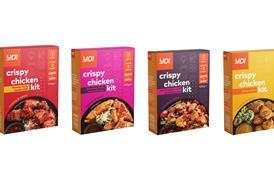Children are difficult for adults to keep up with at the best of times and as consumers they demand a hard sell. Sarah Dowding gives a few pointers on how to attract and keep their fleeting attention
The sophistication of today's children must not be underestimated. They're becoming more fashion conscious, brand aware and more adult than ever. This is a phenomenon that marketeers refer to as "kids growing old, younger".
Compared with 10 years ago, children have greater expectations and they're exposed to more TV with adult themes. This has contributed to childrens' increased demand for credible brands and products at an earlier age.
Research has shown that children are aware of advertising and can recognise that they're being sold to by the age of three. They see through the marketing hyperbole and they are very black and white in their opinions, so if a brand gets it wrong they're alarmingly unforgiving.
Retail Marketing Services use MultiTrack research which demonstrates who, when and how kids shop the fixture. Their studies have show that when a family shops at a yogurt fixture children make 50% of purchase decision half the time alone and half with an adult. Also the older the child the more likely it is they make the decision from 23% for under fives to 83% for 13 to 14 year olds.
Many retailers now have designated shelving or a kids' unit' instore for soft drinks (such as Asda's Kids' Popzone'), biscuits and crisps. Some other stores have a kids' alley' featuring children's products. Since Popzone has been installed sales of featured products have increased by 40% [Asda EPoS data].
The key to successful marketing to children is correct consumer segmentation and it's crucial to understand their language and interests. Failing to acknowledge these subtleties can result in rejection and alienation.
However segmentation also has its risks. A product could be deemed too boyish or girly, too babyish or grown up if targeted too specifically as this can alienate. The age boundaries segmenting the market must be as narrow as possible.
It is impossible to generalise about children but on the whole children copy those older than them, even though differences between school year groups can be huge. Children aspire and perceive themselves as an older age group, and parents are increasingly allowing them greater autonomy.
Attitudes also change dramatically in young people. According to Ray Mason of The Marketing Store Worldwide, five to seven-year-olds are the most fickle with short lived crazes. Eight to 10 year olds are rebellious in order to increase their status with their friends. From the age of eleven, children have adult aspirations and want to be treated as such.
Children look to adults as role models. The most popular kids' foods are pizzas, burgers, sausages and chips the same as for adults. The most successful kids' brands are adult brands with broad appeal. Novelty foods such as Barbie spaghetti and Alphabites don't have a long shelf life as kids get bored quickly.
Peer pressure is very important, to be cool' in the eyes of your friends is paramount. However a product cannot just say that it's cool', it must earn the right to be cool'. Having parents treat children as children is the cause of major embarrassment in front of their friends. The way forward is to treat them as mini adults. Today's children are tomorrow's adults. Their affiliation with brands will generally last throughout their lifetime.
However, in today's hugely dynamic market where children are the new decision makers of household shopping, brands cannot afford to lose their appeal. As the media and internet expand, agencies have to work harder to get noticed and adverts are becoming smarter, slicker and more sophisticated the same as today's children.
- For more information about Leading Edge look up www.igd.com on the web or e-mail leading.edge@igd.com.
FORTHCOMING MEETINGS:
Communicating to Children
Slough July 17
Bristol July 19
Manchester July 20
York July 24
Birmingham July 26
Belfast July 27
Watford August 1
Edinburgh August 3
LEADING EDGE CONVENTION 2000 September 6
{{LEADING EDGE }}
Close menu
- Home
- Retail & Wholesale
-
Products & Suppliers
- Back to parent navigation item
- Products & Suppliers
-
Product Categories:
- Back to parent navigation item
- Product Categories:
- Alcoholic drinks
- Bakery
- Cereals & breakfast
- Cheese
- Chicken & poultry
- Chocolate
- Confectionery
- Crisps, nuts & snacks
- Dairy
- Fish
- Fresh produce
- Frozen
- Household
- Meat
- Own Label
- Sauces & condiments
- Seasonal
- Soft drinks
- Vaping
- Vegan & plant-based
- World foods
- Suppliers
- People
- Reports & Data
-
Topics A-Z
- Back to parent navigation item
- Topics A-Z
-
Popular topics:
- Back to parent navigation item
- Popular topics:
- Cost of living crisis
- Crime
- Deposit Return Schemes
- Finance
- Government & Regulation
- Health
- Inflation
- Loyalty
- Marketing
- Mergers & Acquisitions
- New Product Development
- Sourcing
- Supply chain
- Sustainability & environment
- Technology
- Ultra Processed Foods
- Vaping
- A-Z all topics
- Content by type:
- Events
- Ask iA (beta)
- Subscribe now
Sign in to comment on this article
Not logged in before? Register for FREE guest access today.
You will be able to:
- Read more stories
- Receive daily newsletters
- Comment on stories
Advert













No comments yet